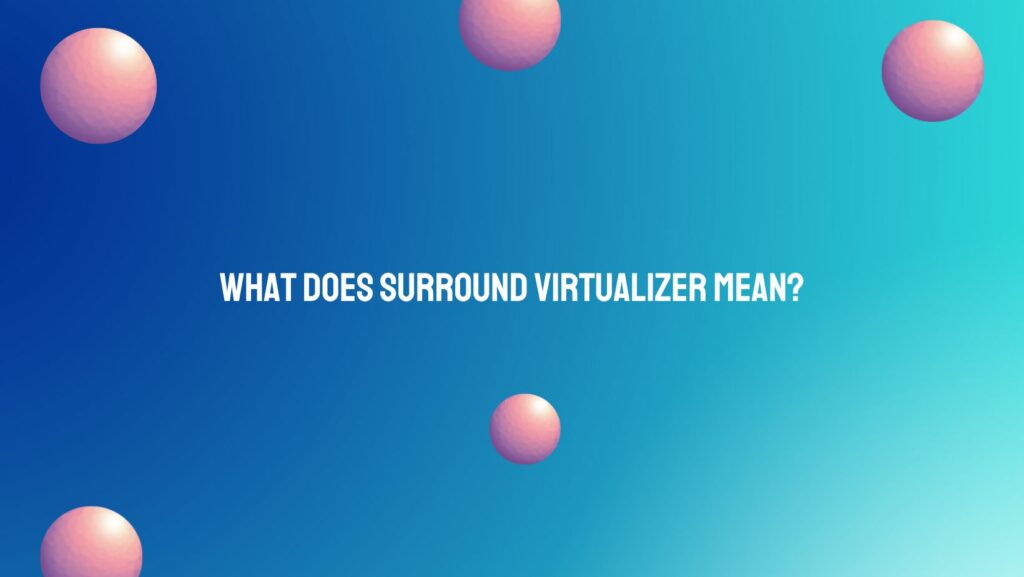In the realm of audio technology, the term “Surround Virtualizer” often sparks curiosity, hinting at an intricate process that goes beyond traditional sound reproduction. This article aims to demystify the concept, shedding light on what a Surround Virtualizer is, how it functions, and the transformative role it plays in creating an immersive auditory experience.
Defining Surround Virtualizer:
A Surround Virtualizer is a sophisticated audio processing technology designed to simulate a surround sound experience in environments where a physical multi-speaker setup may not be practical. Its primary goal is to create a virtualized surround sound environment, allowing users to perceive audio as if it’s originating from different directions, even when using standard headphones or stereo speaker setups.
Key Elements and Functions:
- Spatial Audio Reproduction:
- At its core, the Surround Virtualizer focuses on enhancing spatial audio perception. Through complex algorithms and processing, it mimics the effect of sounds coming from various directions, creating a sense of depth and dimensionality in the audio.
- Expanding the Soundstage:
- A pivotal aspect of the Surround Virtualizer is its ability to broaden the perceived soundstage. In traditional stereo setups, audio is typically confined to the left and right channels. The Surround Virtualizer widens this sonic landscape, contributing to a more expansive and immersive auditory experience.
- Simulating Surround and Overhead Channels:
- One of the key functions of a Surround Virtualizer is to simulate the presence of additional speakers, including those positioned behind and above the listener. This simulation is particularly crucial for users without access to a full multi-speaker system, such as those using headphones or stereo speakers.
- Adapting to Different Setups:
- The versatility of a Surround Virtualizer lies in its adaptability to various audio setups. Whether users are engaged in gaming, watching movies, or listening to music, the technology strives to create a more engaging and realistic audio environment, regardless of the limitations of the hardware.
Use Cases and Applications:
- Headphone Listening:
- Users who prefer or are limited to headphone listening can benefit significantly from a Surround Virtualizer. It enriches the stereo experience by introducing a spatial and surround-like quality to the audio.
- Stereo Speaker Configurations:
- For individuals with stereo speaker setups, a Surround Virtualizer bridges the gap between conventional stereo sound and a more immersive audio experience. It provides an alternative for users who may find it impractical to invest in a full surround sound system.
- Enhanced Media Consumption:
- The concept of Surround Virtualizer is particularly prevalent in audio technologies like Dolby Atmos. When applied to movies, games, and music, it transforms the way users perceive and interact with audio content, creating a more captivating and enveloping experience.
Conclusion:
In essence, a Surround Virtualizer is a technological marvel that brings the magic of surround sound to a broader audience. By intelligently manipulating audio signals, it creates an illusion of three-dimensional space, transcending the limitations of traditional stereo setups. Whether experienced through headphones or stereo speakers, the Surround Virtualizer enriches the auditory journey, making it more immersive, engaging, and true to life. As audio technology continues to advance, the role of the Surround Virtualizer becomes increasingly pivotal in shaping the future of how we experience sound.

